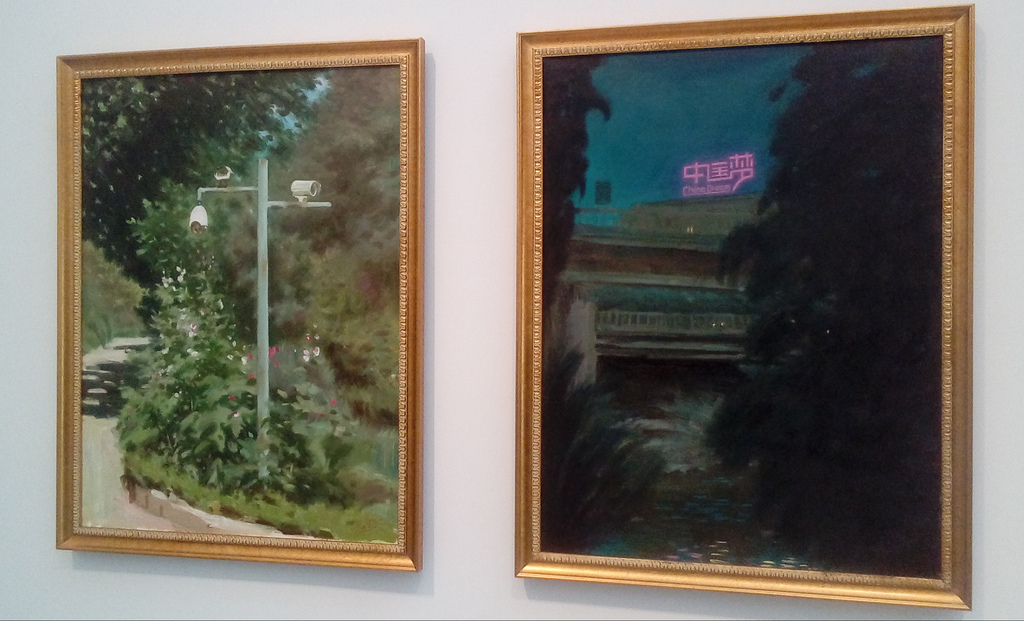
It sounds like the start of a bad joke: an art forger, after having stolen massive numbers of pieces, discovers that his own forgeries have also been stolen and replaced by an even worse forgery. Yet nevertheless, it happened.
To summarize: Xiao Yuan, who was working at a librarian at the Guangzhou Academy of Fine Arts, committed forgery on a massive scale, stealing and replicating one hundred and forty three paintings, returning the fakes and keeping the real works to sell. He turned himself in, mainly because he noticed that someone else was doing the same, but instead of taking real artworks they were taking his own, replacing them with their own. It says something about the nature of the criminal that Xiao that his realization came because he “could clearly discern that their works were terribly bad.” He sounds more like a master artist than a thief. Which is the heart of the issue surrounding forgery.
Forgery itself is something of a deranged jest; the amount of skill needed to perfectly replicate another artist and not get caught—one is reminded of the case in South America where the judge threw out a case against a man forging bills because no one could possibly think them real—is equal or greater to the skill displayed by some “genuine” artists. Which poses the question, not whether forgery is illegal, but whether it in and of itself can be constituted as art. A painter crafts an image of a lake, for example, and in cleverly representing it gains praise. The forger, while having a slightly different set of skills, still represents something observed; the painting rather than the original.
What strikes strangely about these cases is how the authorities respond. The FBI called the forger Qian a genius. The Telegraph calls Zhang a master. For any other crime, would we use these words? Would the press? Would the government? Even our own art (I mean shows like White Collar and films, not to mention musicals, like Catch me if you Can!) seems convinced that negative legality is balanced with positive artistic merit.
Furthermore, in this particular case we have the patent absurdity of art forgery’s prevalence in Zhang’s workspace. Though it is hardly new for criminals to say “everyone else was doing it,” when the forgeries are being replaced by forgeries one wonders at what exactly is happening in the art community. This alone could make for an excellent discussion on the intersection of art and crime, but we shall leave it here in lieu of a far better discussion of the connection between art, which we (rightly or wrongly) associate with originality, and forgery.
The question then remains: is it possible to consider a forger as an artist instead of a criminal? Most of our barometers in this situation do not work. The forger is anonymous; well, so are many artists. They work primarily for profit; because Shakespeare, we all know, was motivated purely by altruism. They copy someone else’s work; does this make all of remix culture illegal, and outlaws all artists who work by using collage and other methods of manipulating others’ creations? Assuming we are not the MPAA, we are caught in an unpleasant shadowland between art and crime. Strictly speaking, forgery only deviates from art in one main facet, that it is trying to pretend to be what it is not, the original work of another artist. Yet if—well, “as” is a better word—forgery is a crime, it is a particularly “artistic” one, as it requires, as said before, a particular series of skills to work. If one is to be a successful forger, they must be able to make a work as the true author would. Not merely the images of Pollock or Picasso, but the very strokes and paper. Likewise, literary forgeries such as the Ossian debacle require the style and method of a writer from the alleged time period.
In any event, the forgery case reveals the incredible capacity for those guarding our great works to steal and sell them, but more importantly the strange boundary between forgery and art. They are not the same, but are frighteningly similar, just as a soldier and a murderer, or a poisoner and a chemist, might need the same sets of skill, but there exists between the two classes an irrevocable divide. Xiao Yuan has been arrested; a great pity. Had the cards fallen differently, perhaps the museums would…well, still be carrying his works, but with his name attached instead.







